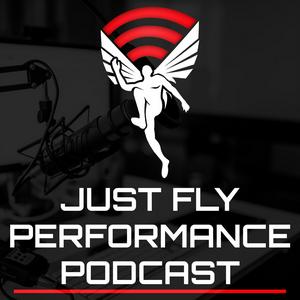476: Kathy Sierra on Movement Mastery in Horses, Humans, and Robots
Today’s guest is Kathy Sierra. Kathy Sierra is a computer scientist, author, and horse-movement innovator who bridges neuroscience, learning psychology, and equine training. Co-creator of the award-winning Head First programming series and founder of the JavaRanch community, she later turned her expertise in intrinsic motivation toward her lifelong passion for horses. Through her Panther Flow approach, Kathy helps horses and riders unlock confident, curious, and expressive movement, sharing her work worldwide through courses, workshops, and writing.
In training and movement, drilling “perfect form” is standard practice. The more we get into how humans learn, the more we realize that “perfect form” is a myth, and learning is a far more complex venture. Using both differential learning (variety) and constraints helps athletes hone in on their own optimal (and robust) technique, without needing to constantly be looking for one “perfect” way to do things.
This is not only true in animals, but also in humans and in machine learning. On this week’s episode, Kathy covers aspects of training horses using the same motor learning concepts that work best in humans. She also goes into how and why robots learn to move better based on constraints, trial and error, versus a “perfect technique” type of programming. This is a fascinating and wide-ranging discussion on human movement, learning, and sport skill.
Today’s episode is brought to you by Hammer Strength.
View more podcast episodes at the podcast homepage. (https://www.just-fly-sports.com/podcast-home/)
Timestamps
0:06 – Introduction to Horse Training Insights
11:16 – Discovering the Community of Movement
21:40 – The Power of Natural Movement
32:19 – Emotions in Movement and Skill Acquisition
41:22 – The Impact of Coaching on Authenticity
53:51 – Techniques for Encouraging Movement Exploration
1:00:23 – The Power of Pattern Interrupts
1:11:34 – The Role of Exploration in Coaching
1:15:18 – Adapting Like Animals
1:22:42 – Embracing Novelty for Movement
1:29:25 – The Myth of Optimality
1:35:18 – Serendipity in Learning
Key Takeaways
Introduction to Horse Training Insights – [0:06]
Kathy shares how working with horses revealed universal truths about movement and behavior, clear communication, patience, and trust underpin both animal and human learning.
What to try:
Start with establishing safety and trust before layering complexity.
Use observation as your first tool, notice subtle shifts in posture or energy.
Match your cues to the learner’s readiness, not your agenda.
Discovering the Community of Movement – [11:16]
She describes how connecting with other movement-minded people broadened her perspective and expanded her toolkit.
What to try:
Seek out cross-disciplinary conversations, dancers, martial artists, animal trainers.
Share drills and games openly; let others adapt them for their setting.
Use community feedback as a way to refine your own approach.
The Power of Natural Movement – [21:40]
Kathy emphasizes that natural, unforced movement often produces the most authentic and sustainable skill.
What to try:
Design environments that invite natural movement patterns to emerge.
Remove overbearing cues, let the body self-organize.
Watch for efficiency and ease, not just output.
Emotions in Movement and Skill Acquisition – [32:19]
She links emotional state to physical learning, noting that fear or tension can block skill development.
What to try:
Pair challenging tasks with positive emotional experiences.
Recognize emotional cues, frustration, joy, hesitation, and adjust tasks accordingly.
Celebrate small wins to keep confidence high.
The Impact of Coaching on Authenticity – [41:22]
Kathy warns that over-coaching can erode authenticity in movement.
What to try:
Avoid shaping every rep, allow athletes to bring their own style.
Use fewer,


